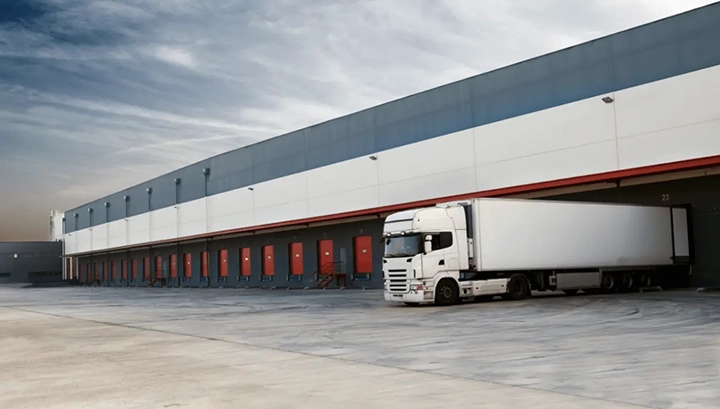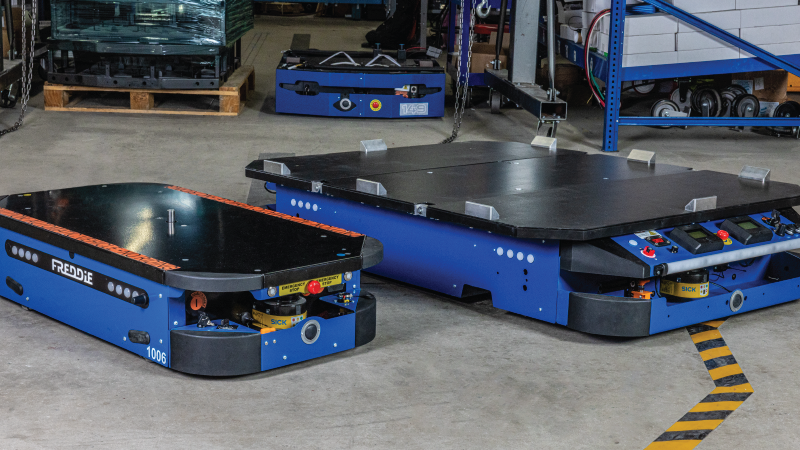People need to eat, and grocery consumers have come to expect not just speed and choice, but also tasty, appealing, fresh, affordable food—regardless of supply chain hurdles and the attention it takes to overcome them.
But a break in the cold chain can impact more than consumer convenience and retail food prices.
Cold chain disruptions can lead to loss of product due to spoilage, degraded product quality in terms of flavor, shortened shelf life, and even microbial growth that could cause outbreaks of dangerous food-borne illness. Whether the product is frozen foods, produce, dairy, meat, seafood, or other time- and temperature-sensitive products like flowers and pharmaceuticals, cold chain disruptions can lead to:
- Loss of product due to spoilage
- Degraded flavor, texture, aroma
- Bruising or discoloration
- Bacterial or fungal growth
Needless to say, any of these issues could cause retailers costly perishable shrink … and in the worst case, they could cost lives.
The challenge for the logistics manager is to strike a balance between transporting products safely and keeping energy consumption and costs under control. And as living standards continue to evolve on a global scale, the demand for perishable goods is only expected to increase.
Add to that burden ongoing supply chain disruptions, geopolitical upheaval, rising energy costs, and the effects of inflation, and it’s clear to see the need to continue optimizing warehouse operations and logistics for perishable goods.
The Cold Chain in Logistics and Warehousing
Transporting, storing, and handling perishables can be incredibly complex. Refrigeration is a critical factor, since cooling can effectively reduce the rate of deterioration by slowing down chemical changes (like ripening) and microorganism growth—the two primary ways food products are lost to spoilage.
The cold chain is the network of transportation and warehousing equipment and facilities that include isothermal features such as specialty doors, walls, floors, and ceilings that limit heat exchange. Refrigerated equipment uses non-mechanical cold sources to keep foods cold, and freezers use cold production mechanisms to maintain food and other vulnerable perishables at even lower temperatures.
The energy required to run refrigerated transport, the specific load integrity requirements, and the time constraints on shipments all contribute to the much higher costs of cold chain shipments over their standard—whose costs have also skyrocketed in recent years.
On land, ice or dry ice might be used. Rail transportation tends to involve both dry ice and refrigerated systems. When perishable goods have to be transported by sea, refrigerated ships with air circulation systems are used along with refrigerated containers.
Air is widely considered the best way to transport perishable goods. Airports have dedicated areas with temperature-controlled refrigerated chambers and freezers to make handling perishable goods a snap. And the cost of shipping by air reflects that difference, too.
Plus, transportation is only one link in the chain. Delicate goods need to be protected at every point in its movement from origin to consumer. Warehouses and distribution centers are just as important as transport. And potential risks to goods extend beyond elevated temperature. Exposure to light, humidity, and changes in atmospheric pressure can also affect perishable products.
So preventing a cold chain rupture has become an even more critical demand on logistics managers, and it’s absolutely vital to identify weak points where tighter monitoring can help shore up risk to products while optimizing efficiency and increasing profitability.
Consumer Purchasing Trends Add Pressure to the Cold Chain
The experiences of the past couple of years have accelerated consumer purchasing shifts toward ecommerce and online shopping in grocery and retail. For one, store customers have become much more comfortable shopping for groceries online, whether for delivery or curbside pickup. This has also led to an evolution toward smaller, more frequent online orders.
At the same time, SKUs have continued to increase in number even as store footprints have remained the same or even shrunk. That means grocers have to stock less inventory in-store and rely on tighter coordination with distribution and warehousing partners. And if that weren’t enough pressure, labor shortages are common in transportation, retail, and warehouse environments, just adding to the challenges of moving and handling goods.
Is There a Silver Lining?
If you’re looking for a little good news in perishable goods logistics and cold chain warehouse operations, consider this: Just as the pandemic accelerated changes in consumer behaviors, it also accelerated technology development and adoption.
That means solutions like widespread use of barcode labels and scanners, RAIN RFID and IoT devices, automation, and robotics are within closer reach than ever before for more transportation, logistics, and warehouse operations. These technologies can make it easier to not just monitor location and even condition of shipments, but to gather and analyze data and get operational insights that can help streamline operations, control costs, and improve productivity.
But choosing the right technologies starts with a deep understanding of the processes and people involved. It involves choosing the right systems, platforms, devices, and integrations to ensure your solutions work seamlessly, and that they continue serving your operations for years to come.
Selecting the right technology integrator is the first step toward optimizing your cold chain performance and profitability. Download 12 Tips for Selecting the Right Supply Chain Technology Partner and get a feel for what to look for, what to ask, and what to expect in a trusted team of experts. Get the right help to future-proof your operations. Click below to claim your copy today.

This blog post was based off of an article from SIPMM Academy. View the original here.






